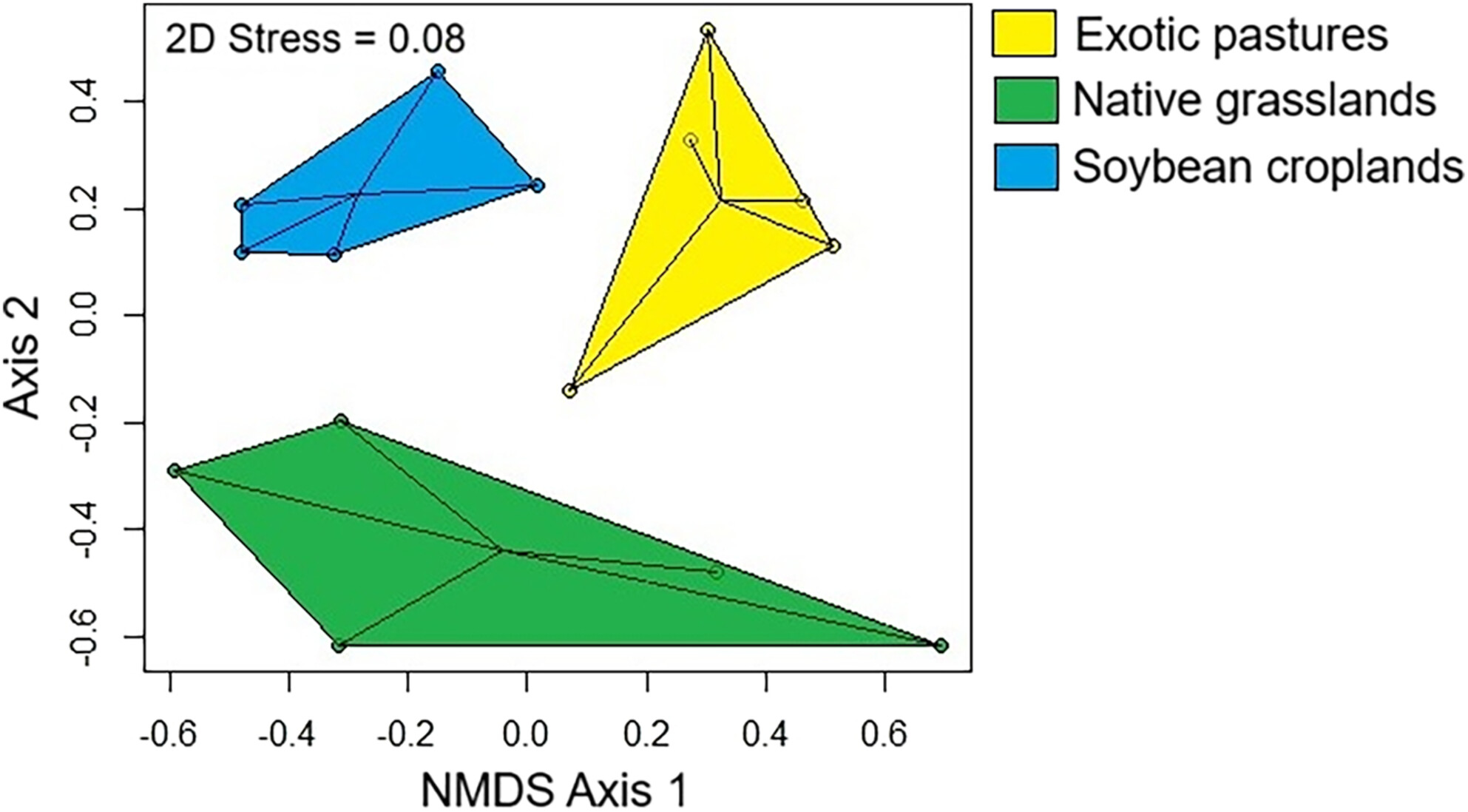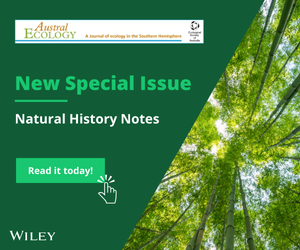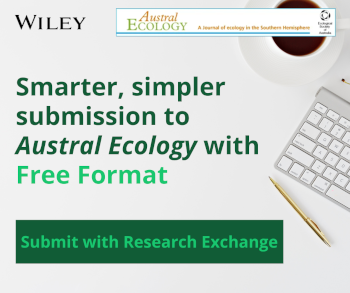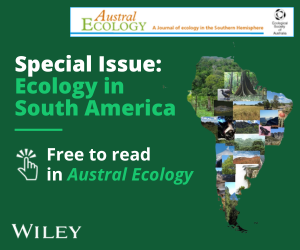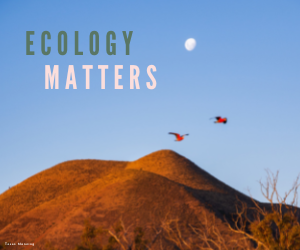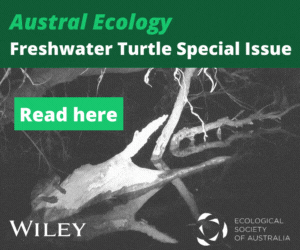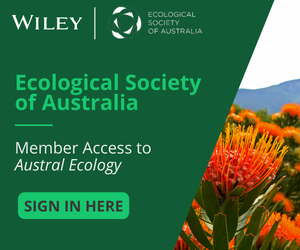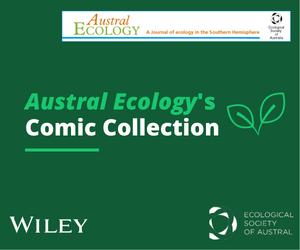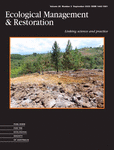Journal list menu
Export Citations
Download PDFs
ISSUE INFORMATION
NATURAL HISTORY NOTE
Filling Gap and Geographic Distribution Map of Elachistocleis helianneae Caramaschi, 2010 (Amphibia: Anura: Microhylidae)
- First Published: 28 May 2025
RESEARCH ARTICLE
Climate Change Effects on Long-Term Leafing Activity of a Tropical Rainforest Tree Species, Davidsonia pruriens
- First Published: 30 May 2025
Impacts of Traditional and New Land Uses on Dung Beetle Assemblages in the Brazilian Pantanal
- First Published: 30 May 2025
Microhabitat Preferences, Climate Vulnerability and Conservation Status of the High-Elevation Orange-Speckled Forest Skink (Tumbunascincus luteilateralis)
- First Published: 02 June 2025
Landscape and the Occupancy of Pampean Grassland Birds: Modelling Site Occupancy Through Acoustic Detection
- First Published: 09 June 2025
Palaeoecological Analyses Reveal Recent Fires Have Destroyed Late-Holocene Peat Deposits in Tasmania's Largest Ramsar Reserve
- First Published: 17 June 2025
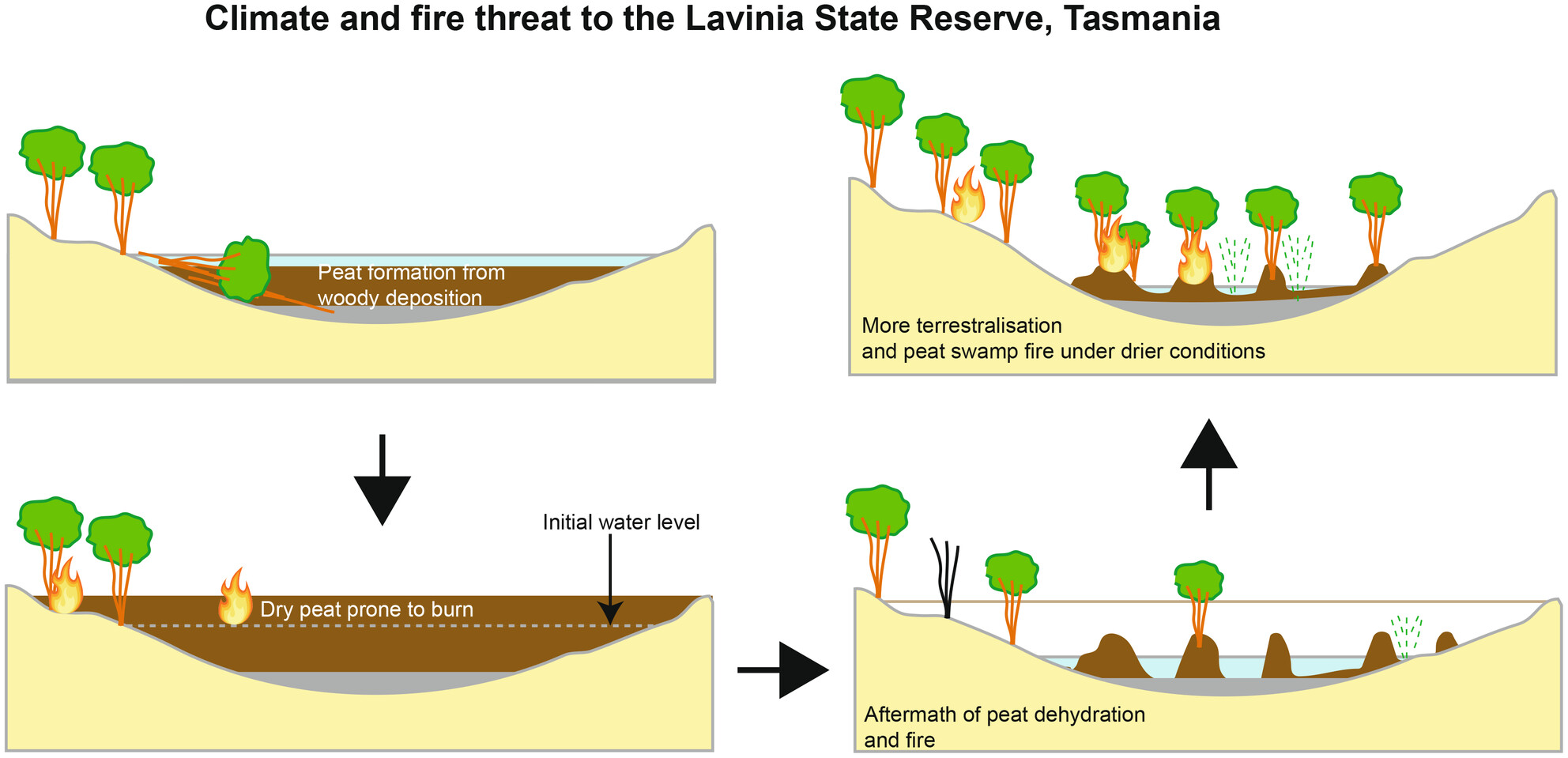
Australian peat-forming wetlands, including those in Tasmania's largest Ramsar reserve—Lavinia State Reserve (LSR), are under threat from climate change, wildfires and human activities. A palaeoecological study of two LSR wetlands reveals that peat began forming in the Mid-Holocene after lake terrestrialisation during droughts and low water levels. Wildfires, particularly in the 2000s, have caused significant peat loss, highlighting the need for improved fire and hydrological management to protect these vulnerable ecosystems.
RESEARCH NOTE
Mitigating Road Barrier Effects for Small Mammals: Evidence From Wildlife Passages in the Brazilian Atlantic Forest
- First Published: 09 June 2025

Roads increase wildlife mortality and isolate populations. This study monitored the movements and abundance of small mammals in areas with and without wildlife passages along BR-101 in Rio de Janeiro for 12 months. Our results show that although many mammals avoid roads, some species use these passages, increasing population connectivity.
RESEARCH ARTICLE
Coarse Woody Debris Improves Nutrient Cycling in a Rehabilitated Montane Forest
- First Published: 12 June 2025
More Resistant Than Resilient: Effect of 15 Years Conservation Management on Ground-Layer Vegetation Composition in Temperate Woodland and Forest
- First Published: 20 June 2025
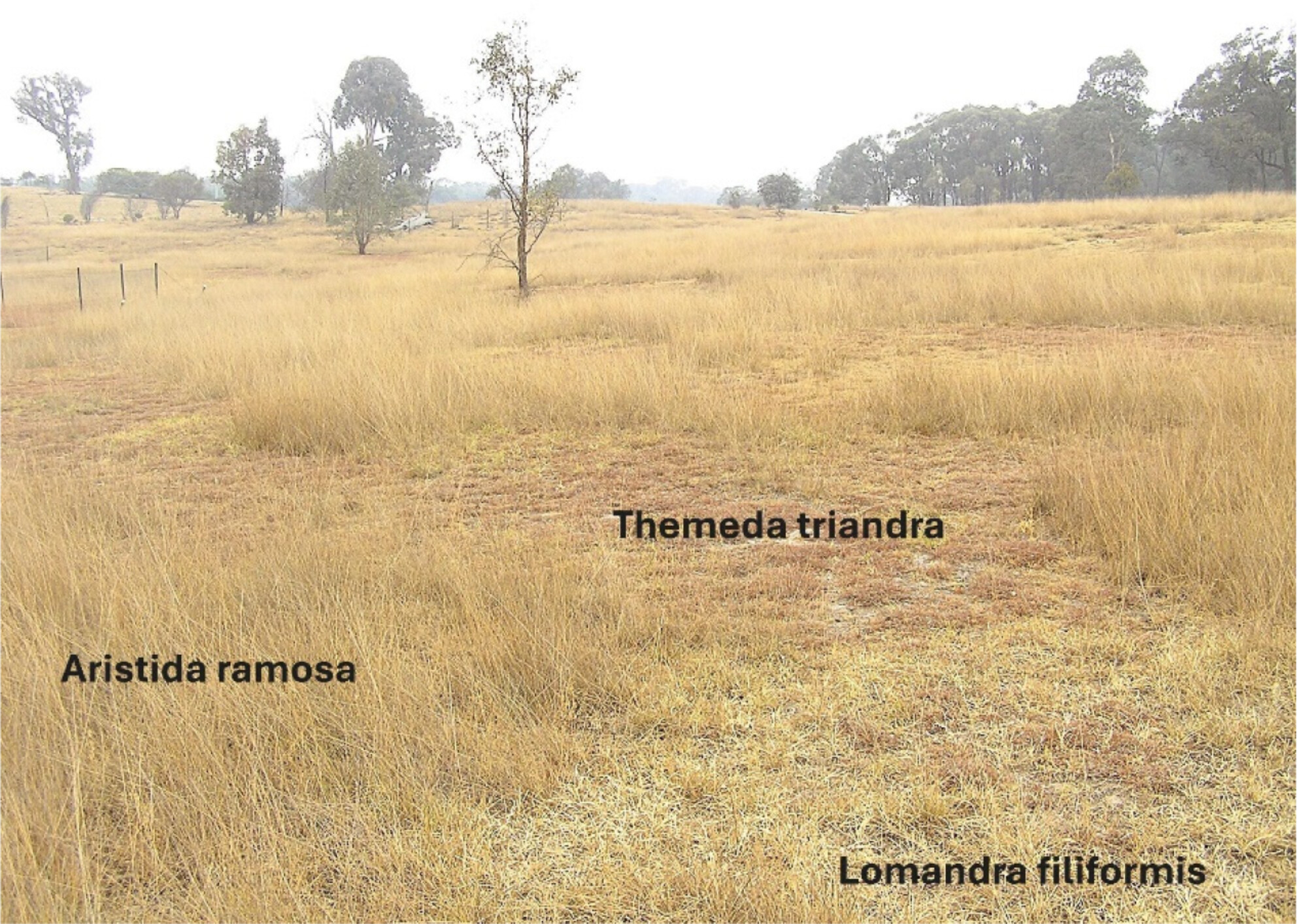
Monitoring a transition from commercial livestock to macropod grazing over 15 years revealed increases in some native life forms and species of conservation significance, while the established native perennial vegetation was resistant to change in the face of severe drought and extremes of rainfall. Linear increases of some exotics in the face of ongoing control suggest possible future threats to ecosystem integrity.
RESEARCH NOTE
New Records and Invasion Risk of the Non-Native Piranha Serrasalmus maculatus (Characiformes, Serrasalmidae) in the Merin Lagoon Basin
- First Published: 23 June 2025
RESEARCH ARTICLE
Estimating Above-Ground Liana Biomass in Disturbed Australian Tropical Forests
- First Published: 23 June 2025
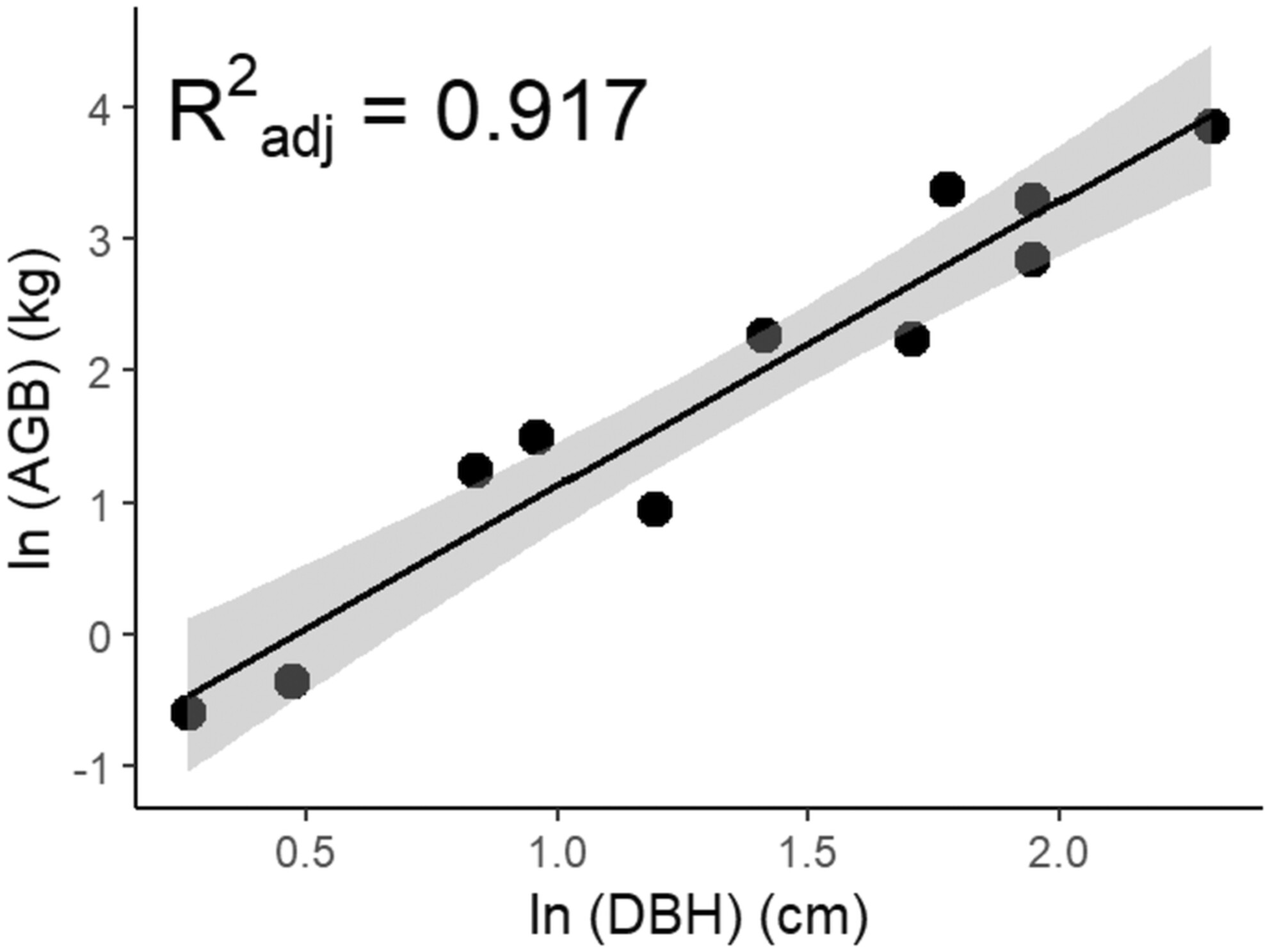
Lianas (woody vines) contribute substantially to tropical forest functioning, including carbon cycling, which makes accurate estimates of their biomass essential. Here, we develop an allometric equation for estimating liana biomass from their diameter and use this to quantify liana abundance in a disturbed Australian rainforest. We find lianas contribute ~10% of woody biomass in the region and 36.5% of woody stem density, with this figure rising to 58% if climbing monocots are also counted, highlighting that these forests contain the highest liana densities compared to elsewhere in the tropics.





